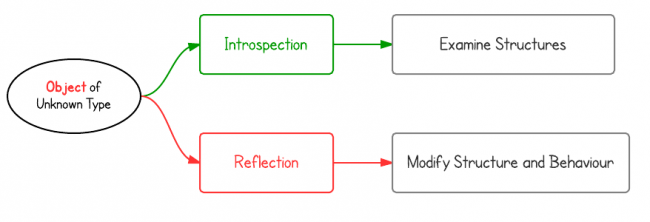

Extensibility Features: By generating instances of extensibility objects with their fully-qualified names, an implementation may use external, user-defined classes.The last method uses the wrapper’s predefined Value field (such as Integer) to reach the fundamental type. The class provides many methods that can be. To acquire Class knowledge on fundamental classes, use: Class c = int.class or Class c = Integer.TYPE. Java Reflection is a process of examining or modifying the run time behavior of a class at run time. One way to get a Class object is to type:
#Java reflection api code
Consequently, reflective operations have slower performance than their non-reflective counterparts, and should be avoided in sections of code which are called frequently in performance-sensitive applications. In a running Java program, this command would be used to describe objects and interfaces. Because reflection involves types that are dynamically resolved, certain Java virtual machine optimizations can not be performed. With the reflection API you can perform tasks such as. is the name of the Java programming language. In Java and various other languages, reflection is the technique of a program looking in on itself. The first step is to get a object for the class you would like to work in. To use these courses, users must first complete three steps. In, one can find reflection classes like Method. Eclipse, MyEclipse, NetBeans, and other IDEs (Integrated Development Environments) are examples. The classes and methods are not directly exposed in the code and may vary dynamically so it can get difficult to change the number of parameters that a method.The Reflection API is mostly used in the following applications: provides methods for inspecting and modifying a class’s run-time actions.Ĭlasses for java reflection can be found in the java.lang and packages.provides mechanisms for retrieving a class’s metadata at runtime.The class primarily serves two purposes: It is used in reflection API and used to deal with parameters during runtime. Firstly, we need to get a Method object that reflects the method we want to invoke. For more about Reflection API, you can refer to our post Java Reflection API. Many methods in the class can be used to get metadata, analyze, and modify a class’s run-time actions. In that case, we use reflection API that consists of various classes such as Class, Methods, Constructors, Parameters, etc. Java Reflection is the process of examining or changing a class’s runtime behavior while it is still running. Reflections reflections new Reflections ( '' ) Reflections reflections new Reflections (M圜lass.


 0 kommentar(er)
0 kommentar(er)
